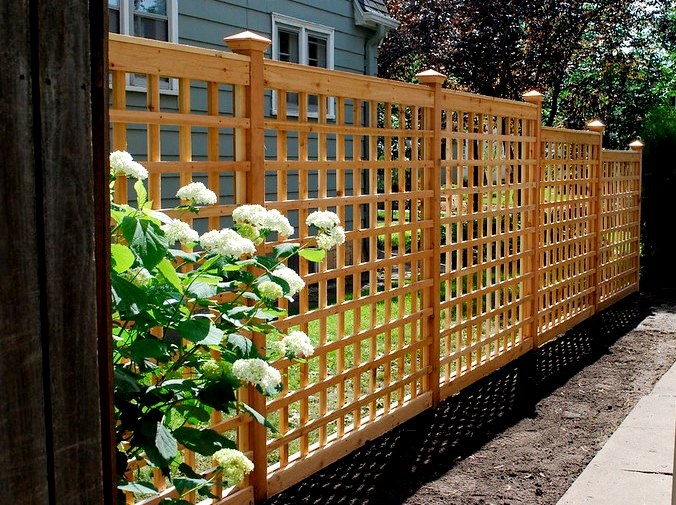How To Pick The Most Budget Friendly Fencing Styles
Are you confused by the cost to install fencing? No wonder. When you see fencing styles that range from $1 to $45 to “hang on to your wallet!” you’re bound to wonder what’s going on. If your budget is limited (or you’re allocating it for other things), what kind of fence can you afford and will it be any good?
Well, help is at hand. Here’s the secret to affordable fencing. It generally has one or more of these 3 money-saving features: inexpensive kinds of fence materials, smaller amounts of materials, or living materials. Let’s dig deeper.
-
Budget Friendly Kinds of Materials
Chain Link. Chain link has a reputation for providing one of the most desirable attributes of a fence – security – at a low cost to purchase and to hire professional installation. It is excellent at: protecting your house and garden from intruders, whether human or animal, keeping your swimming pool safe, and preventing children and pets from wandering off.
Traditionally, there was a tradeoff for this low-price tag, high-security fence material in terms of appearance, which was considered utilitarian at best. However, softening the look of standard chain link can be easy and inexpensive. Plant a vine such as bougainvillea next to your fence and train it to use the links as a trellis. Or pay a little extra for a color-coated or black-vinyl chain link fence; it’s less “in-your-face” ugly.
BONUS: Chain link requires only a modest amount of maintenance, especially the coated varieties.
Pressured Treated Pine (PTP). As a softwood, pine is one of the more affordable fencing styles, and when it has been pressure treated to resist insects, fungus, and rot, you can build a good-looking wood fence that is still less costly than more prestigious lumber species like redwood or cedar. However, PTP does require a fair amount of protective maintenance, including staining and sealing, and moistening in hot sunny weather so it won’t crack.
BONUS: Pressure-treated pine fencing may be painted if you wish (but you’d be well advised to wait 6-12 months after installation to ensure that the wood has dried sufficiently).
-
Smaller Amounts of Materials
Picket fence. Yes, that charming white picket fence you’re dreaming of is actually a very affordable option. The reason: materials cost for picket fencing is comparatively low, since the pickets tend to be spaced 1-3” apart. It’s both decorative and good for marking your property line. If you’d also like your picket fence to keep toddlers or small animals in your yard, make sure pickets are spaced closely enough that that tiny hands or heads won’t get caught.
BONUS: Picket fences add a ton of curb appeal.
Lattice or lattice detail fence. Wood fencing that is partially or completely made of lattice panels carries a cost-reducing secret: the sections are made up of slats, which are cheaper to produce than full-sized fencing panels. Like pickets, lattice fencing is great for keeping pets and kids safe, while preventing neighborhood dogs from using your property as a bathroom.
BONUS: A lattice top, added to solid fence panels, keeps the cost down while allowing more light into your yard.
-
Living Materials
Live bamboo. It won’t cost much to create your own living privacy fence when you plant fast-growing bamboo. But be warned -- use only the clumping variety, not the invasive running bamboo. Otherwise, you’ll end up with a lot more fence than you bargained for – and possibly some very annoyed neighbors.
BONUS: You probably won’t need a fence permit to plant bamboo.
Hedge. There is an incredible variety of plants suitable for hedges (contact a landscaper for natural “fencing” styles). Arborvitae is a very popular choice; once you’ve made an initial investment by purchasing the young plants, you’ll have a beautiful green privacy fence all year round.
BONUS: Depending on the species you choose, hedges offer fringe benefits galore, such as lovely blossoms or a natural windbreak. Many types last for decades.
Looking for a Pro? Call us (866) 441-6648

Fencing Average Costs
Fence Contractors Experiences

Hiring A Great Landscaper Was Almost Too Easy, Even Long Distance

Fence Repair Adds A Perfectly Matched Second Gate




